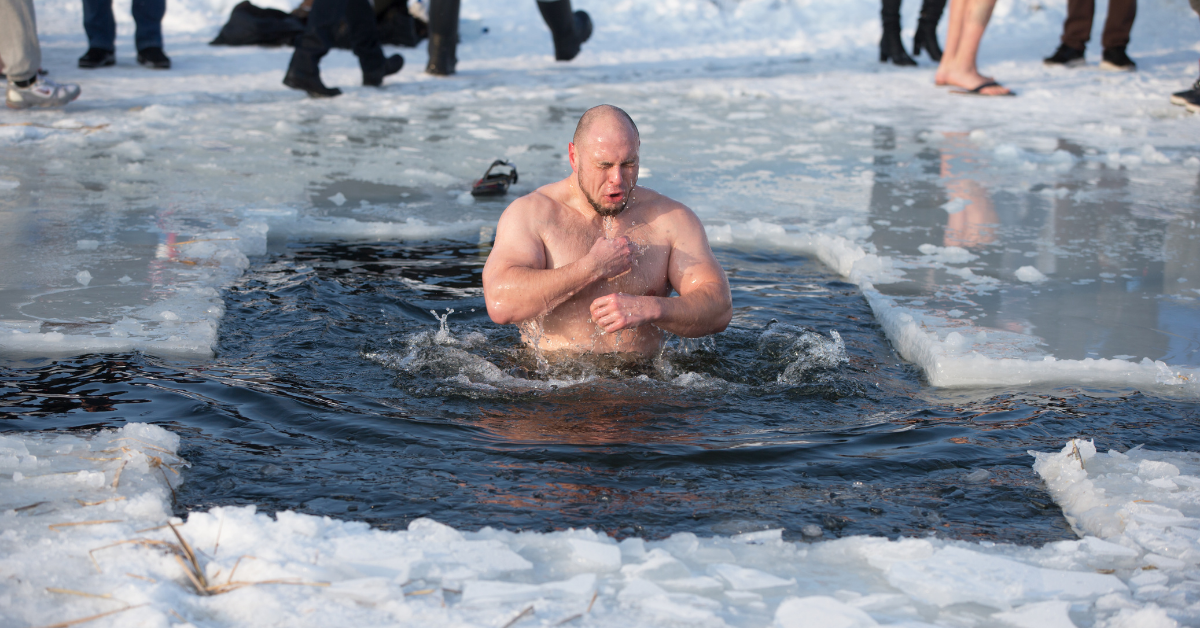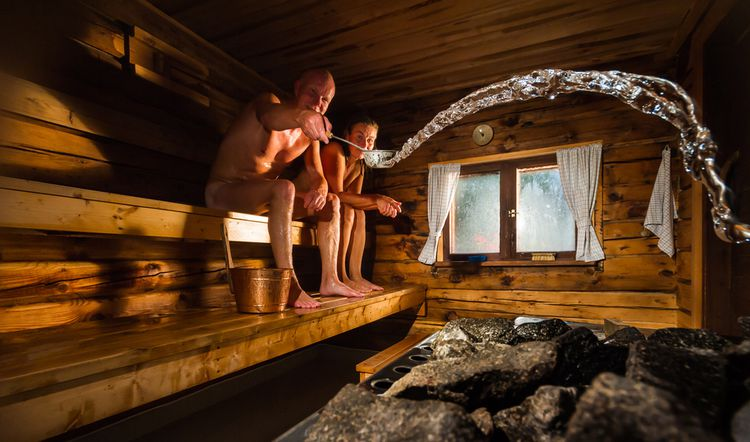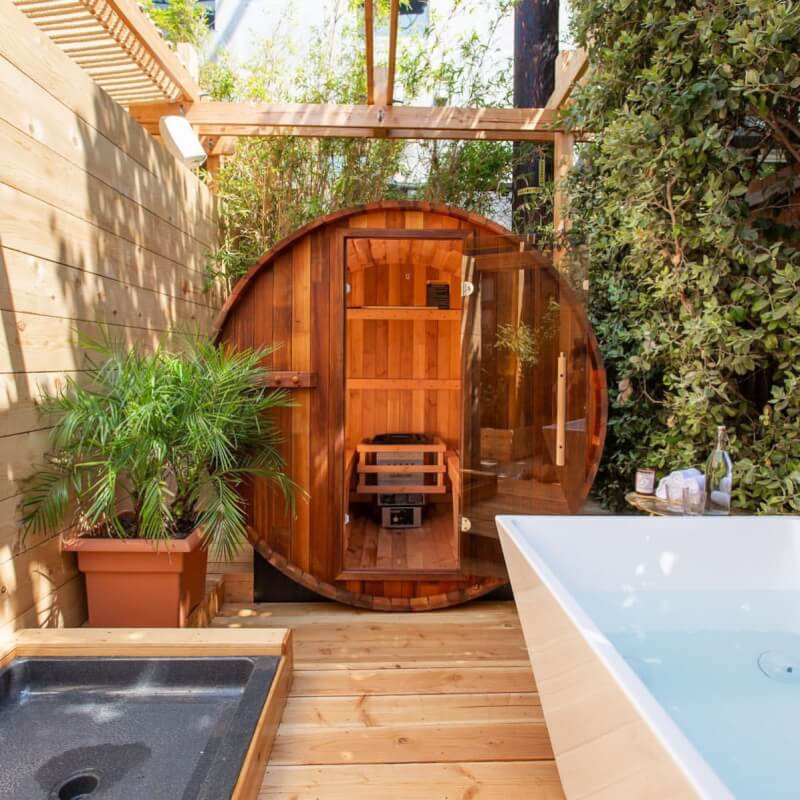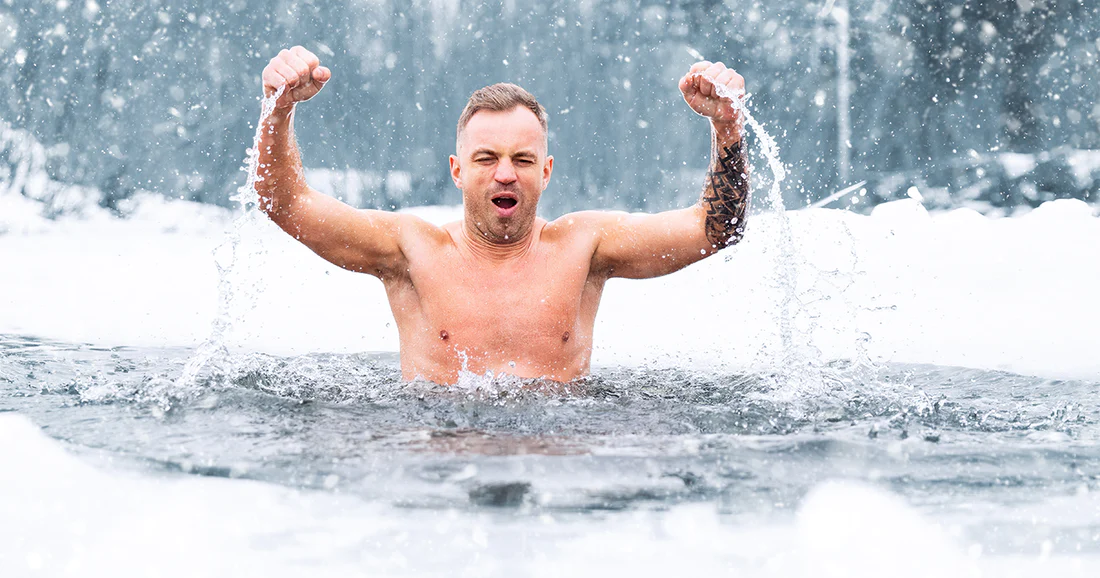Are you looking for the ultimate sauna and cold plunge routine to help boost your overall health, well-being, and energy? Whether you're a busy professional trying to find ways to relax and unwind after work or an athlete seeking a full-body wellness experience with long-lasting benefits, this guide is here to walk you through every step of the way. With clear information on how each element contributes towards optimal physical performance and mental clarity skillfully woven throughout science-based recommendations - you'll be left feeling empowered and prepared as you embark upon your journey into holistic wellness.
For centuries, Nordic cultures, particularly in Finland, have embraced the ritual of transitioning from soothing saunas to invigorating plunges in the icy waters of the Baltic Sea. This ancient practice, known as the "Nordic Cycle," has become a ubiquitous rejuvenation tool in their way of life.
We'll first briefly go over the health benefits of both saunas and cold plunges. How cold and hot they should be, duration, frequency, and which one you should start with and end with.
Let's dive into the reasons why incorporating a cold plunge into your sauna regimen might be the missing piece you've been seeking.
The Health Benefits of a Hot Sauna Session
Sauna therapy, an ancient practice dating back thousands of years, has stood the test of time for good reason. Its profound effects on the body are rooted in a fundamental understanding of human physiology.
1. Improved Cardiovascular Health: Sauna sessions can lead to increased heart rate and improved blood circulation, which can contribute to better cardiovascular function and reduced risk of heart-related issues.
2. Enhanced Relaxation and Stress Reduction: The soothing, calming environment of a sauna promotes relaxation, helps alleviate stress, and can lead to improved mental well-being.
3. Detoxification: Sweating in a sauna helps expel toxins from the body, which can support overall detoxification and contribute to clearer, healthier skin.
4. Muscle Recovery and Pain Relief: The heat from a sauna can help relax muscles, reduce tension, and alleviate muscle soreness. This makes saunas an excellent post-workout recovery tool.
5. Improved Respiratory Function: Regular sauna use has been associated with enhanced lung capacity and can be beneficial for individuals with respiratory conditions like asthma and bronchitis.
6. Boosted Immune System: Sauna sessions may stimulate the production of white blood cells, helping to strengthen the immune system and improve its ability to defend against illnesses and infections.
7. Improved Endurance and Performance: Athletes often use saunas to increase their tolerance to heat and improve their overall endurance levels. This can lead to better performance in various physical activities.
8. Enhanced Skin Health: Regular sauna use can lead to improved skin tone, texture, and overall appearance. The increased blood flow to the skin's surface promotes a healthy, radiant complexion.
9. Weight Management: While not a substitute for regular exercise and a balanced diet, saunas can aid in weight management by increasing heart rate and calorie expenditure, particularly when followed by appropriate hydration.
10. Improved Mood and Mental Clarity: Sauna sessions trigger the release of endorphins, which are often referred to as "feel-good" hormones. This can lead to elevated mood, reduced symptoms of depression, and improved mental focus.
11. Promotes Better Sleep: The relaxation induced by sauna use, coupled with improved circulation, can contribute to better sleep quality and duration.
12. Strengthened Immunity to Cold and Flu: Regular sauna use may lead to increased resistance to common cold and flu viruses, potentially reducing the frequency and severity of infections.
The efficacy of sauna therapy is firmly grounded in its ability to harness the body’s natural responses to heat. By understanding the science behind this ancient practice, we gain insight into how it can be a transformative tool in achieving optimal health and well-being.

The Health Benefits of Cold Plunges
A cold plunge has been proven to provide a wide range of bodily and mental benefits that can significantly help improve your well-being. From strengthening your immune system, and decreasing flu symptoms, to being part of athletic warm-ups, this method of self-care can help support both physical and mental health. Here's a list of all the potential health benefits:
1. Increases Blood Flow: Cold water therapy causes blood vessels to constrict and then dilate upon exiting the water. This process, known as vasoconstriction and vasodilation, enhances blood flow, which can lead to better circulation. Saunas are actually equivalent to a moderate cardio workout.
2. Reduced Muscle Soreness and Inflammation: Cold exposure helps reduce inflammation and muscle soreness, making it a popular practice among athletes for post-workout recovery.
3. Enhanced Immune Function: Ice baths may stimulate the production of white blood cells, which play a crucial role in the immune system's defense against infections and illnesses.
4. Increased Metabolism and Calorie Burn: Cold immersion can activate brown fat, which burns calories to generate heat. This can contribute to weight management and improved metabolic health.
5. Elevated Mood and Reduced Stress: Cold water exposure triggers the release of endorphins, neurotransmitters that promote feelings of well-being and act as natural painkillers. It can also reduce levels of stress hormones like cortisol.
6. Improved Mental Alertness and Focus: The shock of cold water can stimulate the central nervous system, leading to increased alertness, heightened focus, and improved mental clarity.
7. Enhanced Respiratory Function: Cold water exposure can lead to deeper breathing and improved lung capacity. It may also help individuals adapt to cold air more easily, which can be beneficial for respiratory health.
8. Tightened Pores and Improved Skin Health: Cold water immersion can tighten pores, reduce inflammation, and increase blood flow to the skin's surface. This can lead to healthier, more vibrant-looking skin.
9. Strengthened Immune Response: Regular cold plunges have been associated with a more robust immune system, leading to improved resistance against infections and illnesses.
10. Increased Energy and Vitality: Cold water immersion can leave you feeling invigorated and energized, helping to combat feelings of fatigue and lethargy.
11. Enhanced Willpower and Mental Toughness: Regularly subjecting oneself to cold water requires mental fortitude, potentially strengthening your ability to handle stress and discomfort.
Cold plunges have become a secret weapon for numerous high-achieving individuals across all professions. Whether it's world-class athletes or CEOs leading Fortune 500 companies, many rely on cold therapy to increase their vitality and well-being. If you aspire to enhance your overall performance and elevate the quality of your life, a cold plunge might be the transformative addition you've been seeking.
Protocols for Cold Exposure

How Cold Should The Water Be?
How cold depends on your personal cold tolerance, your core metabolism, and a number of different factors that I couldn't know or have access to. There is not a one-size-fits-all to this but there is a rule of thumb that we can apply individually.
Rule of Thumb: The environment you place yourself into puts your state of mind into "Woah, I would really like to get out of this environment but I know I can stay in safely." If you're uncertain about the temperature, a slight difficulty in controlling your breath can serve as a reliable indicator as well.
The temperature of a cold plunge and its effect on your state of mind can vary throughout the day and from day to day. It may even change depending on the time you decide to immerse yourself in it.
If you go in during the afternoon I would bet that you can endure a colder temperature vs. immersing yourself at night. This is due to ambient temperature and the natural cycle of our core temperature throughout the day.
The Importance of "Cold Shock"
The shock you feel when entering cold water is the activation of the sympathetic nervous system. When the sympathetic nervous system activates it releases catecholamines which are dopamine, norepinephrine, and epinephrine.
You might ask if increasing these stress hormones deliberately is good a thing, and it turns out there are many positive effects from this. These elevations in norepinephrine and dopamine are very long-lasting and people actually report feeling vast improvements in mood and vast improvements in levels of cognitive attention and energy.
This shock and activation of the sympathetic nervous system is the catalyst of all the amazing health benefits cold exposure provides.
Cold Immersion vs. Cold Shower
Simply put, the most effective approach is immersing your entire body up to your neck in cold water, including your hands and feet.
The second best would be cold showers and the third best would be to go outside with minimum clothing (nothing inappropriate of course) to the point where you almost start shivering or just begin to shiver.
I do want to emphasize there have been very few, if any studies on cold showers. This is because in a laboratory you want to have as much control over outside factors as possible. Emerging into cold water up to your neck with your hands and feet submerged is straightforward and easy to control.
Cold showers on the other hand are more complicated. People have different-sized bodies, some people will put their heads under the water, and some will lean forward. The cold water exposure would be very difficult to measure.
How Long Should You Stay in a Cold Plunge
Studies suggest you should be in the cold water for a minimum of 11 minutes per week spread throughout 2-4 sessions or 2-3 minute sessions. That 11-minute cutoff is not a strict threshold and is actually geared more toward increases in metabolism.
The 11-minute threshold is a good number to get started with and if you need a number to stay consistent but as you read below these numbers are subjective. Some will be able to stay in for 10 minutes with little discomfort and others will stay in 3 minutes for the entire week.
Either way, just starting this practice is a great accomplishment.
As your tolerance builds and 11 minutes per week is easy for you; you can either lower temperature, increase duration, or increase frequency. All safely of course.
Cold Plunge Protocols
There are two main protocols you can do: Objective (Time Per Session x Sessions Per Week) and Subjective (How many times you resist the urge to get out in a cold plunge session)
Objective
An example of this protocol would be: Monday, I do one minute of deliberate cold exposure at a given temperature. Wednesday, I extend that by 50%, and on Friday, I do cold exposure for twice as long as I did it on Monday.
If you choose to continue with this regimen, you will need adjust either the duration, lower the temperature, or alter both the duration and the frequency until your reach the lowest temperature attainable for your ice bath.
This process is very attractive and you'll gain a tolerance to the cold quickly. This might seem like a positive but eventually, you will "bottom out."
What do I mean by that?
The problem is you don't have an infinite amount of room to lower the temperature. You will either have to get into temperatures that are so cold it's dangerous or you'll have to stay in cold temperatures for such long periods that it becomes impractical. We all live busy lives and you can't be "chilling" in a cold plunge all day.
You'll still get some of the health benefits from this protocol like reduced inflammation, increased metabolism, etc but in terms of mental resilience, you will plateau.
You don't want to get so resilient to the cold that it feels like nothing when you get in. One of the greatest abilities you gain from cold plunging is the power to overcome stressful situations.
This is why I recommend the next protocol.
Subjective
I was introduced to this technique through Dr. Andrew Huberman, whose podcast by the way is a goldmine for health and wellness enthusiasts. Once I learned about it, I decided to incorporate it into my routine, given it's the one Dr. Huberman uses personally.
Unlike other cold plunge protocols, this approach doesn't center on how long you spend in the cold. Instead, it revolves around a concept he terms "walls." These "walls" represent moments of intense adrenaline spikes (the release of norepinephrine and epinephrine).
A "wall" can be best described as that internal voice screaming, "I can't do this" or "Get out, right now" when confronted with the cold.
When we intentionally subject our bodies to cold exposure, we purposefully introduce stress. However, because this stress is deliberate, it provides us with an opportunity to practice composure and maintain mental clarity, even in the face of stress.
Some individuals, myself included, experience heightened levels of norepinephrine and epinephrine even before the actual cold exposure.
Even if you are feeling very resistant to getting into the ice bath or cold shower and you manage to do that, that's going over what I would call one wall.
Here's an example of this protocol:
Monday: "I'm going to overcome three walls today during my cold plunge routine."
1st Wall: "I really don't want to get in, this is going to be awful."
2nd Wall: You enter the cold plunge and your body's adrenaline spikes. Internally, you're freaking out and you're telling yourself "I need to get out."
3rd Wall: Some time has passed, you've caught your breath and you're thinking this isn't so bad. But then it happens again, your adrenaline spikes and you go into fight or flight, "I need to get out" but you don't, you stay in for 10 seconds longer.
To maximize the benefits of cold exposure, it's crucial to go beyond a mere focus on temperature and duration.
Instead, it's about identifying and overcoming "walls" - moments of resistance within yourself when faced with the cold. This approach grants you flexibility in tailoring your sessions. For instance, one day you might conquer five walls, then perhaps three the next, possibly at a slightly lower temperature.
Unlike a rigid approach that fixates on reaching lower and lower temperatures, this method allows for a more adaptable and sustainable practice.
Those who solely aim for temperature and time can become overly cold-adapted, limiting further progress. By concentrating on surmounting walls, you challenge your mental resilience and enhance your ability to exert conscious control over reflexes, all while operating in an environment of heightened norepinephrine and epinephrine levels.
In real-life scenarios, stressors seldom come with predetermined time frames or contexts. They often arrive unexpectedly, provoking a surge of norepinephrine and epinephrine. By training yourself to navigate these moments of resistance in the cold, you're better equipped to handle unforeseen stressors in everyday life.
How Long Should I Stay in a Sauna?

Anywhere from 5 to 20 minutes per session. Very brief periods of just five minutes of heat exposure can be a powerful stimulus. If the heat exposure is significantly great enough for you.
The recommended time in a sauna per week should be about 90 minutes in total divided between 4-7 sessions will yield the greatest health benefits.
How Hot Should The Sauna Be
How hot should you make the sauna or the environment that you get into? Well, that will depend on your tolerance for heat. The temperature of the saunas used in almost all studies is between 176 F and 212 F.
I recommend starting on the lower end of the temperature and if that's still too hot, lower the temperature even more.
(Most major studies on saunas predominantly focus on traditional saunas rather than infrared saunas, mainly due to the fact that these studies are conducted in Finland. In Nordic cultures, infrared saunas are not considered authentic saunas.)
Sauna or Cold Plunge First?

It honestly comes down to personal preference. Going in a sauna first will make the cold plunge easier and you'll still get the health benefits of a cold plunge.
The main benefit you might miss out on is mental resilience but again this is different from person to person.
Even if you're in a 190F sauna for 30 minutes, a 40F cold plunge will still shock your body and be tough for most people.
As you gain resilience, both physically and mentally your preferences might change over time or even day to day.
Is Cold Plunge or Sauna Last?
Ending with cold exposure seems to yield the greatest benefits. By ending with a cold plunge, your body is subjected to a beneficial type of stress called hermetic stress. This stress encourages your body to step up its game and demonstrate its physiological power.
It is often overlooked that a substantial portion of our day is spent in temperature-controlled environments. That may consequently diminish our natural abilities as humans. Additionally, warming your body naturally from the cold requires an increased metabolic expenditure, leading to the burning of extra calories in order to restore warmth.
Who Shouldn't Cold Plunge or Sauna?
Remember, it's important to gradually acclimate yourself to cold plunges, especially if you're new to this practice.
Certain individuals should exercise caution or avoid using a cold plunge or sauna altogether. These considerations include heart conditions, high blood pressure, pregnancy, respiratory issues, severe medical conditions, ongoing infections or illnesses, medication usage, skin conditions, and age-related factors for elderly individuals, children, and individuals dealing with dehydration or low blood pressure. It's crucial to consult with a healthcare provider before incorporating a hot sauna cold plunge routine into your wellness practice, especially if you have any underlying health concerns or fall into one of the mentioned categories.
Recommended Video






























































